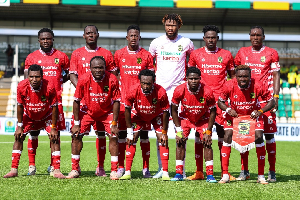Some microfinance companies are doubtful of meeting the Bank of Ghana’s set deadline of June 2016 to shore-up their paid capital to as per the revised regulations.
The regulator last year reviewed upward the minimum capital requirements for deposits and non-deposits -- taking microfinance institutions to GH¢300,000 and GH¢500,000 respectively and giving existing companies that fall short of the capital up to June 30, 2016 to comply.
But Collins Amponsah-Mensah, National Board Chairperson of the Ghana Association of Microfinance Companies (GAMC), told the B&FT microfinance companies have had tough times in the last two years.
“Business has been very bad since 2012 and some microfinance companies have not been able to make profits, not to talk of ploughing some back into their equity. Although our members are working hard to meet the requirements, we continue to engage the regulator on the way forward,” he said.
Mr. Amponsah-Mensa was speaking to the B&FTon the sidelines of a seminar held to discuss lessons learnt from the collapse of microfinance companies, and said despite some MFIs developing innovating ways of shoring-up the paid-up capital, others are likely to miss the deadline.
“We are looking at the deadline to see if we can meet it…we are very hopeful some members will be able to meet that deadline. Those that are not able to meet it, we will see how we manage the situation,” he added.
In engaging the central bank, Mr. Amponsah said “we are talking about what to do when we get there and some companies fall short of the requirements. We know it is the regulation, but we also hope the central bank is not too tight in its implementation.
“A lot of our members are trying to sell stakes in their company in order to meet these regulations…since microfinance companies are not publicly listed, most of our members have to rely on close relations for capital injection,” he said.
The regulator has licenced about 500 microfinance companies following revision of the operating rules and guidelines for microfinance institutions, categorising the sector into Tier-2 for deposit-taking and Tier-3 for non-deposit taking institutions.
According to Mr. Amponsah-Mensah, microfinance companies suffered a “liquidity crunch” in 2013, resulting in collapse for some of them.
“Although this situation affected our member-companies, it also brought out lessons that needed to be learnt. Our systems were put through a sustainability test, which at the end of the day revealed our capacity to continue in business,” he said.
According to him, microfinance companies must build on their capacities in order to remain in business.
“As much as we agree that some member-companies experienced crises due to their own lack of understanding of the microfinance business, others became victims of circumstances. It may interest all to note that liquidity risk, which was the cause of the crisis, ranked 19th in the global assessment report -- with over-indebtedness, credit risk, competition and risk management taking the first, second, third and fourth places respectively. This tells us that microfinance in Ghana is in the infant stage,” he said.
Business News of Saturday, 4 October 2014
Source: B&FT













